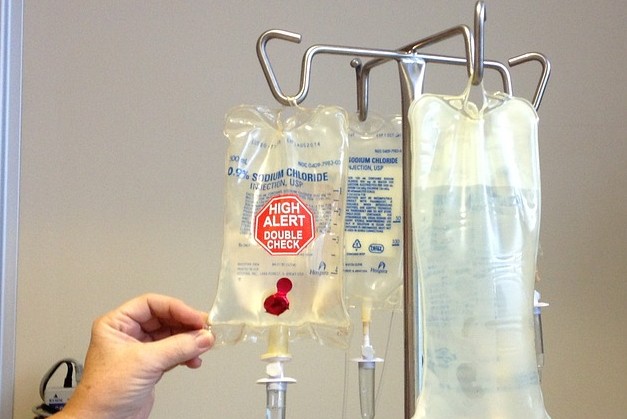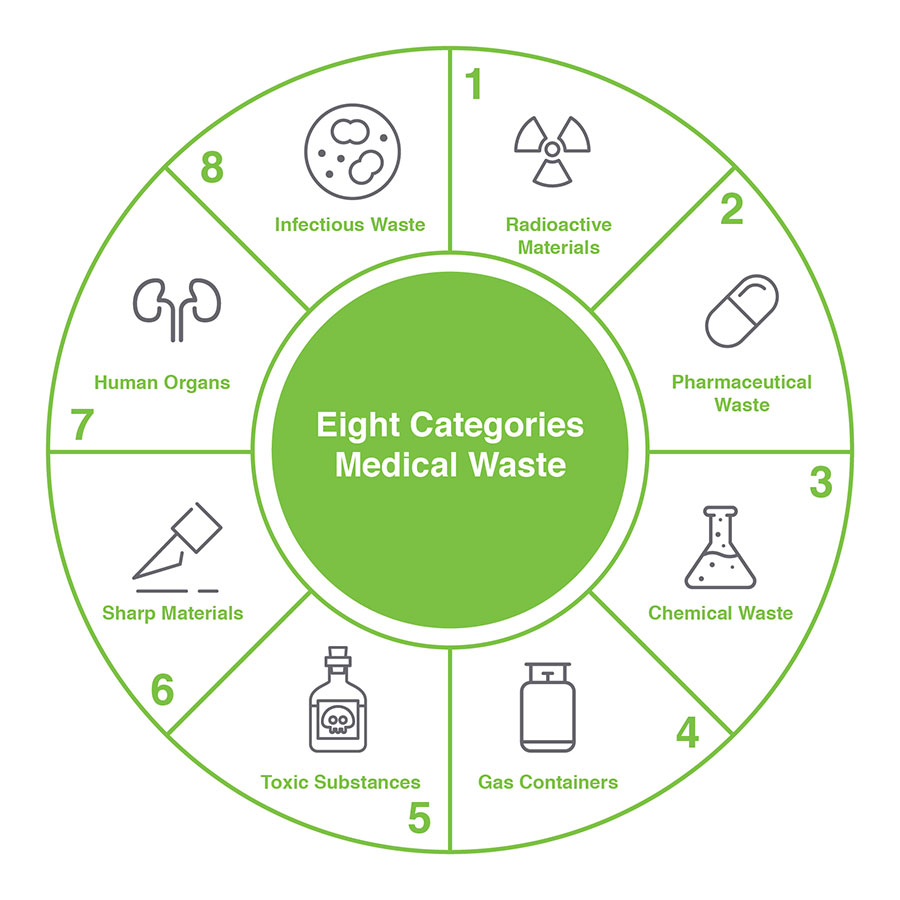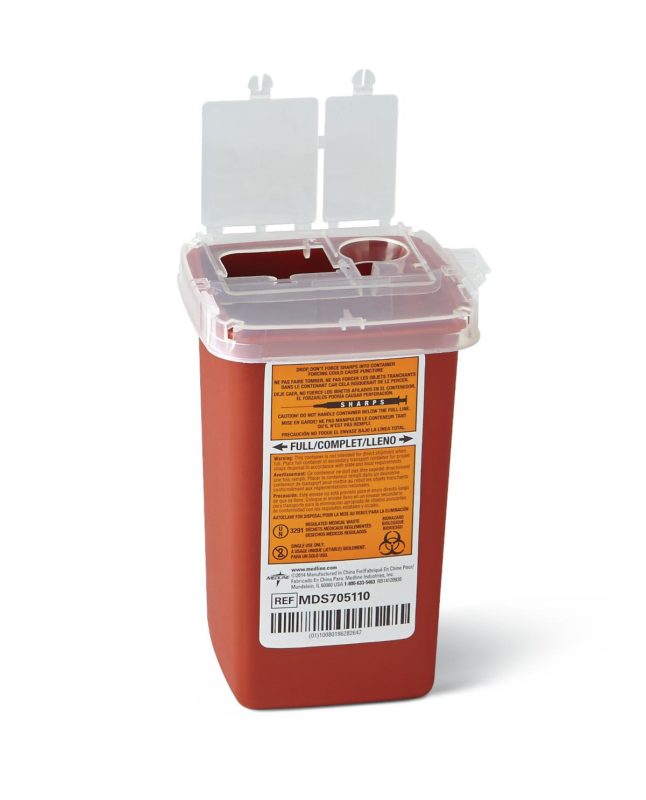Defending Health: Revealing the Significance of Expert Medical Waste Removal
Wiki Article
Keep Ahead of Rules: Expert Suggestions on Medical Waste Disposal
In a world where the medical care sector is constantly developing, it is essential for clinical facilities to stay ahead of guidelines when it pertains to the proper disposal of clinical waste. With stringent guidelines and regular regulatory adjustments, it can be testing to browse the complexities of this procedure. Nevertheless, with professional guidance, centers can ensure conformity and minimize threats connected with improper waste disposal. From comprehending the different categories of clinical waste to carrying out the appropriate collection and partition approaches, this conversation will offer actionable suggestions and valuable understandings to help facilities stay ahead of policies in the ever-changing landscape of clinical waste disposal.Understanding Medical Waste Categories
Comprehending clinical waste classifications is necessary for appropriate disposal and administration in health care centers. Medical waste describes any type of waste generated by health care activities that may pose a danger to public health and wellness or the environment. It is vital to categorize medical waste properly to guarantee its safe handling, disposal, transport, and treatment.There are several classifications of clinical waste that healthcare facilities require to be accustomed to. The most usual categories include contagious waste, pathological waste, sharps waste, pharmaceutical waste, and chemical waste. Each group has specific standards and laws for its proper administration and disposal.
Pathological waste refers to human cells, organs, or body parts that need unique handling and disposal. Pharmaceutical waste makes up ended, unused, or contaminated drugs that require cautious handling and disposal.
Staying Up-To-Date With Regulatory Modifications
Staying current with regulatory changes is important for health care facilities to guarantee conformity and correct administration of medical garbage disposal. medical waste removal near me. With regulations continuously evolving, it is essential for medical care centers to stay updated to prevent penalties, penalties, and prospective harm to the environment and public healthTo stay in advance of governing modifications, healthcare centers need to develop a system for monitoring and monitoring updates. This can be done by signing up for regulatory e-newsletters, participating in meetings and workshops, and proactively taking part in industry associations. In addition, centers need to designate an employee or team in charge of staying educated and distributing information to relevant stakeholders.
Normal communication with governing agencies is likewise important. Healthcare centers should develop relationships with regional, state, and government firms to guarantee they understand any type of adjustments in policies that might affect their waste management methods. This can be done via routine conferences, engagement in public remark periods, and aggressive engagement with regulative firms.
Moreover, healthcare centers ought to take into consideration partnering with waste administration firms that focus on clinical waste disposal (medical waste disposal services with WasteX). These companies are typically fluent in the most recent regulations and can offer guidance and assistance to make certain conformity
Carrying Out Correct Collection and Partition Methods
To effectively manage medical waste disposal, health care facilities need to develop proper collection and segregation methods in accordance with regulatory guidelines. Applying these techniques makes certain the secure handling and disposal of possibly unsafe products, secures the setting, and decreases the threat of injuries and infections to medical care employees and the public.
Correct collection and partition approaches entail the usage of marked containers and identifying systems. Health care facilities ought to give plainly identified containers for Learn More various kinds of medical waste, such as sharps, infectious waste, pharmaceutical waste, and non-hazardous waste. These containers need to be color-coded and plainly marked to avoid confusion and promote very easy recognition.
Furthermore, healthcare centers must train their staff on the correct treatments for accumulating and segregating medical waste. This consists of informing them on the different kinds of waste, the proper containers to use, and the importance of complying with guidelines and guidelines. Normal training sessions and correspondence course must be carried out to make sure that employee remain current on best techniques.
Moreover, healthcare centers should develop a system for normal collection and disposal of medical waste. This might involve partnering with qualified waste management firms that specialize in medical garbage disposal. These business will certainly guarantee that the accumulated waste is carried and dealt with in conformity with regulatory needs.
Choosing the Right Disposal Techniques

Incineration is just one of one of the most common and reliable methods for taking care of particular kinds of medical waste, such as pathological waste and sharps. It entails the regulated burning of waste at heats, reducing it to ash. Incineration can release dangerous contaminants right into the air and contribute to air pollution.

Chemical therapy entails the usage of chemicals to disinfect and neutralize the waste. Microwave therapy makes use of microwave power to warmth and decontaminate the waste.
Guaranteeing Compliance With Paperwork and Training
After very carefully taking into consideration the appropriate disposal methods for medical waste, health care facilities should guarantee conformity with laws and minimize ecological influence by applying reliable documents and training treatments. This action is crucial in preserving a sustainable and risk-free atmosphere for Click Here both health care employees and the public.
Training is similarly vital in guaranteeing conformity with regulations. Healthcare employees that handle clinical waste ought to get ideal training on waste segregation, managing, and disposal treatments. This training should cover topics such as the proper use individual safety tools, identification of different sorts of waste, and the appropriate disposal methods for every waste classification. By giving comprehensive training, healthcare facilities can equip their staff to make enlightened choices and minimize the risk of improper waste disposal.
Conclusion
Finally, remaining ahead of guidelines in medical waste disposal is vital for health care facilities. medical waste removal service. Recognizing the different classifications of medical waste, staying upgraded with governing adjustments, carrying out proper collection and segregation approaches, selecting the suitable disposal methods, and ensuring compliance through documents and training are all crucial actions. By following these standards, health care organizations can properly get rid of and handle of medical waste in a responsible and risk-free mannerFrom recognizing the different groups of clinical waste to implementing the appropriate collection and segregation methods, this conversation will give useful insights and actionable tips to assist centers stay in advance of policies in the ever-changing landscape of clinical waste disposal. - medical waste disposal services with WasteX
The most usual categories include infectious waste, pathological waste, sharps waste, pharmaceutical waste, and chemical waste. Health care centers must provide clearly identified containers for various types of clinical waste, such as sharps, contagious waste, pharmaceutical waste, and non-hazardous waste. Healthcare facilities need to establish a thorough useful content system to tape and track all elements of medical waste disposal, including types of waste generated, amounts, and disposal methods made use of. Healthcare employees that manage medical waste should get suitable training on waste partition, managing, and disposal procedures.
Report this wiki page